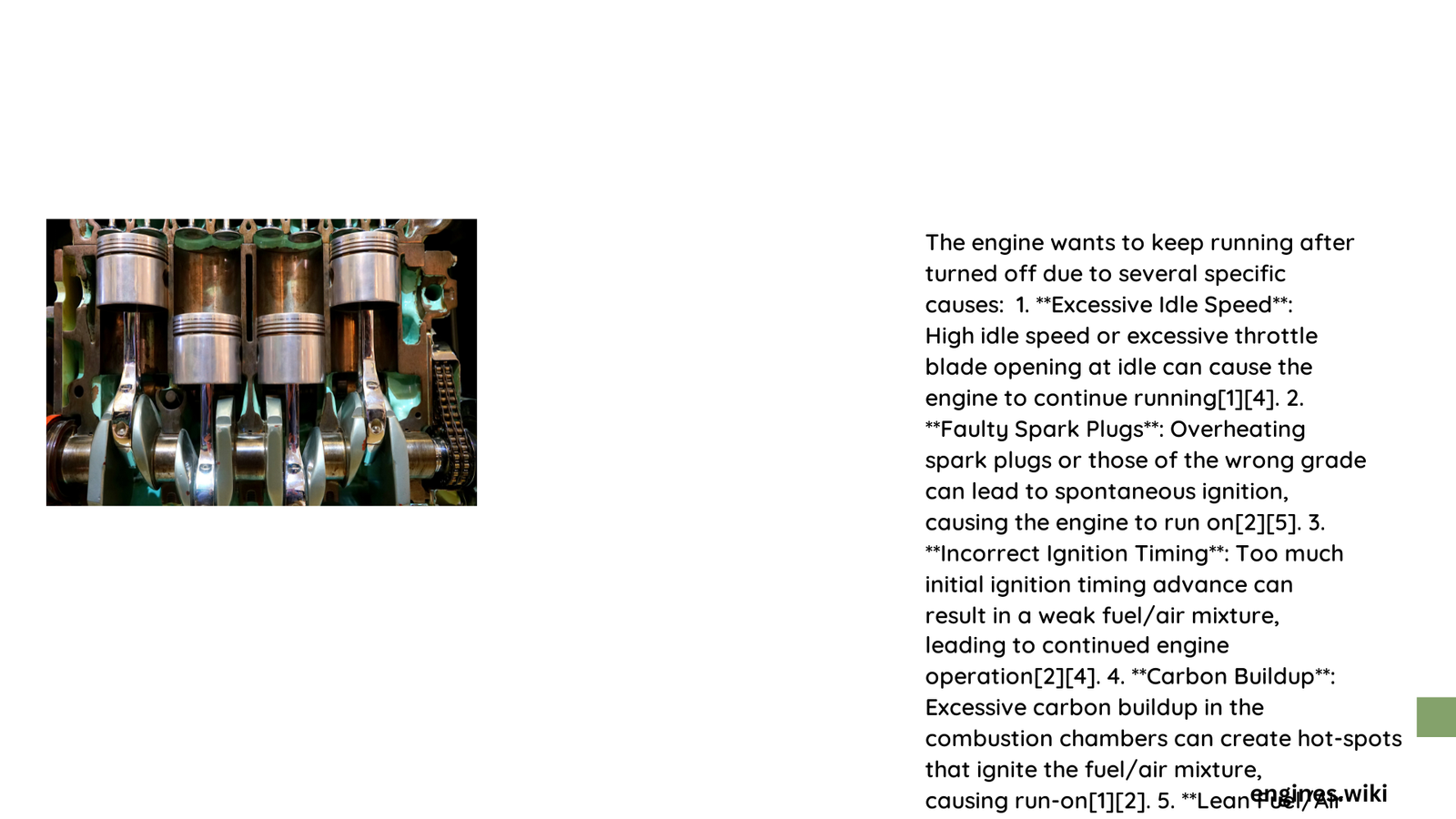Why Does Your Engine Want to Keep Running After Turned Off?
When an engine continues running after the ignition is switched off, it’s experiencing a phenomenon known as dieseling or run-on. This potentially damaging condition occurs due to complex mechanical and electrical interactions within your vehicle’s powertrain system. Unburned fuel, overheated components, and specific system malfunctions can cause your engine to persistently operate beyond your control, risking potential damage and reduced vehicle performance.
What Triggers Engine Continuous Operation?
Mechanical Components Causing Run-On
| Component | Potential Issue | Risk Level |
|---|---|---|
| Spark Plugs | Excessive Heat Retention | High |
| Fuel Injectors | Incomplete Fuel Cutoff | Medium |
| Carburetor | Improper Fuel/Air Mixture | High |
Why Do Spark Plugs Contribute to Engine Run-On?
Spark plugs can become miniature glow plugs when they retain excessive heat. This residual thermal energy can spontaneously ignite unburned fuel in the combustion chamber, causing the engine to continue running even after you’ve turned the key to the off position.
How Do Fuel System Problems Create Persistent Engine Operation?
- Fuel Quality Considerations
- Low octane ratings increase combustion instability
- Poor fuel can leave residual combustible materials
-
Contaminated fuel systems disrupt normal shutdown processes
-
Injection System Malfunctions
- Damaged injectors might leak small fuel quantities
- Incomplete fuel cutoff mechanisms
- Electronic control unit (ECU) communication errors
Diagnostic Approach to Engine Run-On
What Tools Help Diagnose Continuous Engine Operation?
- Timing light
- Vacuum pressure gauge
- Fuel pressure diagnostic equipment
- Professional automotive scan tools
How to Perform Initial Troubleshooting?
- Check ignition timing specifications
- Inspect spark plug condition
- Evaluate fuel system pressure
- Scan for potential error codes
- Examine vacuum system integrity
Prevention and Repair Strategies
What Immediate Steps Can You Take?
- Use high-quality fuel with appropriate octane rating
- Perform regular maintenance
- Clean fuel injection systems
- Replace worn spark plugs
- Address carbon buildup
Cost Considerations for Repairs
| Repair Type | Estimated Cost Range |
|---|---|
| Spark Plug Replacement | $50 – $250 |
| Fuel Injector Service | $150 – $600 |
| Diagnostic Evaluation | $80 – $200 |
Technical Insights into Engine Run-On Mechanisms
Modern engines rely on precise electronic and mechanical synchronization. When this delicate balance is disrupted, run-on can occur. Factors like ambient temperature, engine design, and maintenance history significantly influence this phenomenon.
Expert Recommendations
Persistent engine run-on should never be ignored. While some instances might seem minor, they can indicate underlying systemic issues that could lead to expensive repairs if left unaddressed.
When to Seek Professional Help
- Consistent run-on behavior
- Unusual engine sounds during shutdown
- Decreased fuel efficiency
- Check engine light activation
Conclusion
Understanding why your engine wants to keep running after turned off requires systematic investigation and potentially professional intervention. By recognizing early warning signs and maintaining your vehicle proactively, you can prevent long-term damage and ensure optimal performance.

